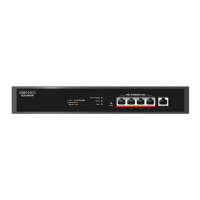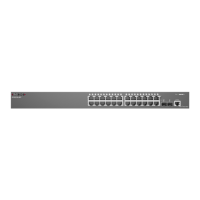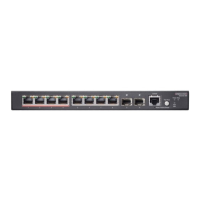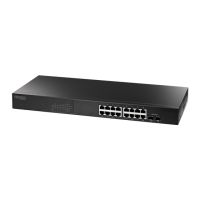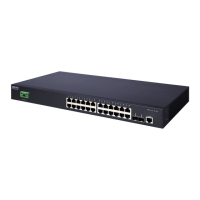C
HAPTER
28
| Port Mirroring Commands
RSPAN Mirroring Commands
– 764 –
RSPAN MIRRORING COMMANDS
Remote Switched Port Analyzer (RSPAN) allows you to mirror traffic from
remote switches for analysis on a local destination port.
Configuration Guidelines
Take the following steps to configure an RSPAN session:
1. Use the vlan rspan command to configure a VLAN to use for RSPAN.
(Default VLAN 1 and switch cluster VLAN 4093 are prohibited.)
2. Use the rspan source command to specify the interfaces and the traffic
type (RX, TX or both) to be monitored.
3. Use the rspan destination command to specify the destination port for
the traffic mirrored by an RSPAN session.
4. Use the rspan remote vlan command to specify the VLAN to be used for
an RSPAN session, to specify the switch’s role as a source, intermediate
relay, or destination of the mirrored traffic, and to configure the uplink
ports designated to carry this traffic.
RSPAN Limitations
The following limitations apply to the use of RSPAN on this switch:
◆ RSPAN Ports – Only ports can be configured as an RSPAN source,
destination, or uplink; static and dynamic trunks are not allowed. A
port can only be configured as one type of RSPAN interface – source,
destination, or uplink. Also, note that the source port and destination
port cannot be configured on the same switch.
Only 802.1Q trunk or hybrid (i.e., general use) ports can be configured
as an RSPAN uplink or destination port – access ports are not allowed
(see switchport mode).
Table 101: RSPAN Commands
Command Function Mode
vlan rspan Creates a VLAN dedicated to carrying RSPAN
traffic
VC
rspan source Specifies the source port and traffic type to be
mirrored
GC
rspan destination Specifies the destination port to monitor the
mirrored traffic
GC
rspan remote vlan Specifies the RSPAN VLAN, switch role (source,
intermediate or destination), and the uplink
ports
GC
no rspan session Deletes a configured RSPAN session GC
show rspan Displays the configuration settings for an RSPAN
session
PE
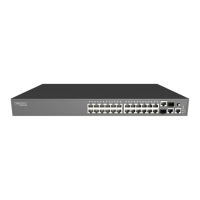
